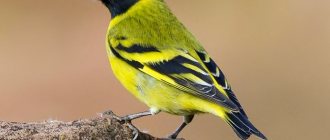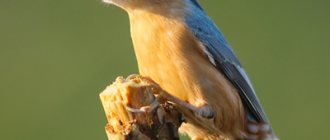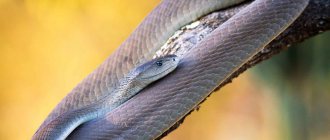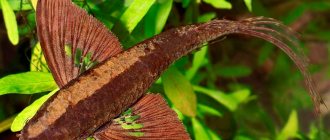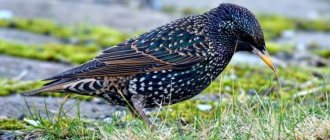Home page Wildlife Animal world
29 253 4.5 1
Interesting fact: despite the fact that absolutely all clown fish are born males, if necessary, each of them is able to change their gender. This does not always happen, but only when the female dies: since females are much smaller than males, this is the only opportunity to reproduce.
Relations in the flock are built on a hierarchical principle - a pair of the largest individuals is at the head, while the rest restrain their growth so as not to become a victim of the dominant male. But as soon as he dies or transforms into a female, all the fish in the school immediately begin to grow in order to take his place. And this growth stops only when the “contender” is found.
Description
Much is known about the clown fish; it lives in salty and warm waters (oceans and seas). In Latin, the name sounds like Amphiprioninae, classified in the Pomacentra family. Today there are 30 species. Color can vary from purple, yellow to fiery orange and even red.
This is a very brave amphiprion, always fiercely defends itself and its home. It can even engage in combat with a diver, biting him as soon as he approaches the fish. At the same time, it has several completely non-sharp and very small teeth.
All fish at the beginning of their life are males and as they grow they change sex if a female dies in the school. Males are much smaller in size. The maximum size of a female is 20 centimeters. In an aquarium, fish usually do not grow more than 9 centimeters.
All fish have a flattened body on the sides, a short head and a high back. There are spines on the front of the upper fin. The head of the school of fish is the largest female.
Natural enemies include sharks, eels and other large fish.
Appearance of amphiprions
Clown fish are distinguished not only by their bright colors, but also by their body shape. They have a short back and a flattened body (from the sides). These fish have one dorsal fin, divided into two parts by a kind of notch. One of the parts (the one closer to the head) has prickly thorns, while the other, on the contrary, is very soft.
Clownfish are usually red or yellow in color with large white stripes or spots
The body length of amphiprions can vary from 15 to 20 centimeters. There is a lot of mucus on the skin of these fish; it protects them from the stinging cells of sea anemones, among which clown fish spend quite a lot of time. The skin of amphiprions has a contrasting color, always in bright shades, with a predominance of yellow, blue, white, and orange colors.
Lifestyle
A distinctive feature of this representative of the deep sea is that it creates a unique symbiosis with sea anemone (anemone). Sea anemones are marine animals without a skeleton and similar in appearance to a flower. At the tips of the anemone's tentacles there are stinging cells that contain poisonous threads. When necessary, when defending against an enemy, sea anemones shoot poison.
When a clown fish first “meets” its anemone, it allows itself to be stung a little. This determines the composition of the mucus that covers the “flower” and which it produces in order to avoid poisoning itself. Subsequently, the fish produces a similar composition of mucus and hides from uninvited guests among the tentacles of the anemone.
For both creatures, the union is beneficial: the fish hides from enemies and sometimes brings food, and the anemone ventilates the water and cleanses the “flower” of food that is not digested. If several fish gather around one sea anemone, then a clear hierarchy is formed among them. The largest individual, the female, is dominant. As soon as it disappears, the largest male changes sex and takes the place of the main fish.
What does it eat?
In the wild, clownfish feed on algae, small crustaceans and other microscopic organisms. The main food for fry is plankton. Close interaction with sea anemones in natural conditions helps amphiprions provide themselves with food under any conditions. The fish actively eat the remains of her meals. This feature allows you not only to find food without extra effort, but also to carry out a kind of cleaning of your habitat. For sea anemones, the destruction of food debris by amphiprions is also beneficial.
Habitats and lifespan
In its natural environment, clown fish live in the waters of the Indian and Pacific oceans. You can meet it near the coasts of Japan and Polynesia, in eastern Africa and on the reefs of Australia, in the Red Sea. The main thing is that the waters are warm and clean. Although today, even with the existing environmental disaster, the fish is not an endangered species.
In ocean waters, the fish lives up to 10 years. If kept in an aquarium, it can live 20 years. After all, in an artificial reservoir the fish have no enemies.
Habitat
The warm waters of the Pacific and Indian Oceans are the main places where clown fish live. Populations of amphiprions are observed off East Africa, and significant numbers also live off the coast of Japan.
In nature, the life expectancy of fish is ten years, and in favorable conditions of the aquarium environment, where individuals regularly feed and are not attacked, this period increases by one and a half to two times.
A characteristic feature of the amphiprion’s lifestyle is its “friendship” with the poisonous anemone. Together, the clownfish and sea anemone form a mutually beneficial symbiosis, where each protects and cares for the other.
Clownfish and sea anemones work well together, despite the fact that this type of sea anemone is poisonous. Their tentacles contain enough venom to cause painful burns in humans or kill a medium-sized fish. However, the clown fish has immunity, which it develops in an unusual way: first, the fish lightly touches the tentacle with poison, thus receiving information about it. The clown amphiprion then secretes mucus that protects it from the stinging tentacles.
After developing immunity, the amphiprion settles near the sea anemone, performing a ventilating function and eliminating food debris, and the anemone protects its neighbor from predators. Thus, sea anemone and clown fish are an excellent example of mutually beneficial cooperation.
Spawning in natural waters
Clown fish lay their eggs on almost any flat surface, but not far from the sea anemone. The male takes care of the younger generation. The transformation into fry from eggs occurs completely depending on the phases of the moon in complete darkness after 7-10 days from the moment of laying eggs.
Keeping in an aquarium
The aquarium clown fish is very popular among aquarists. She is loved for her bright color and quite interesting behavior, which can be observed for several hours. In addition, the fish is completely unpretentious, but when kept in an artificial reservoir, it very quickly becomes aggressive, so it cannot be kept with any type of fish for aquariums.
Before buying an amphiprion, you need to plant an anemone in the aquarium; you will need several corals so that the fish can create a symbiosis and hide somewhere. This is not the smallest representative of the deep sea, so to maintain one individual you will need at least 50 liters of water, and preferably 70. The water temperature should not fall below 25 degrees, and it will have to be changed at least 4 times a month.
Health
Diseases - parasitic, fungal, bacterial - pose a danger to tropical fish. Therefore, it is preferable to buy fish that are bred on farms: among wild-caught fish, infections are more common. Common pathologies:
- fin rot: a bacterial infection that manifests itself as deformation and rotting of the plumage and is treated by adding the antibiotic chloramphenicol to the water and sprinkling the affected fins with streptocide while simultaneously cleaning the aquarium;
- ichthyophthyriasis (“semolina”) – whitish spots on the skin and plumage caused by a parasite; for treatment, fish with signs of illness are placed in water with a lower density, which is relatively harmless to the clownfish, but will kill the parasite;
- cryptokaryon (white spot disease) is another parasitosis in which light spots appear on the skin of the fish, and then the fish may die; This disease is treated with medications that include copper, strictly observing the doses: this element is also poisonous for clowns.
If the fish happen to get sick, the female and alpha male cope best with it. Juveniles demonstrate good adaptive capabilities. Adult males have the least chance of survival.
Reproduction in artificial conditions
The fish necessarily spawn in the evening; it is moonlight that activates the behavior of the males. To lay eggs, you need to arrange a place. This could be a clay pot or saucer near the anemone. The place where spawning will take place must be clean. Egg throwing lasts for 2 hours. As soon as the laying has occurred, it is better to turn off the lighting for about a day.
After spawning, the male takes care of the eggs, removes dead ones and protects them from unwanted guests. As soon as the fry is born, it is already able to feed on its own. In the first week of life, it is impossible to determine the future color of the fish; it appears only 7 days after birth.
If the aquarium contains other types of fish, then it is advisable to remove the fry so that they do not get eaten. You can feed the younger generation the same as adults. There are special requirements for water quality, since this representative of the deep sea in childhood is especially susceptible to various diseases: bacterial and fungal infections.
Reproduction
These fish form small family groups in which one female lives with several males, and is the largest and oldest fish in the family. It is interesting that it can spawn until it dies (in nature, amphiphrions live about ten years, in an aquarium - twice as long). The female prefers to do this during the full moon, not far from her mate, and if he is not there, then in a grotto or under a rock.
An interesting fact is that the fish do not throw their eggs to the mercy of fate: the males guard the clutch throughout the entire maturation period (it lasts from six to ten days).
A week later, fry emerge from the eggs, rise upward to places where plankton accumulates, where they feed, grow (many cubs die during this period), and when they mature, they go in search of sea anemones and join the flock.
The most common aquarium species
Clark chocolate. It is very easy to keep and produces offspring well. The best pairs come from the same brood. It is not recommended to keep this species with smaller clownfish, as they can be very aggressive towards them.
"Snowflake". It has three white lines vertically and is red-orange. It grows up to 9 centimeters, so you need a minimum aquarium volume of 80 liters. Usually it does not show aggression and can live even without sea anemones.
Black clown. This is a small fish, not aggressive. Cohabits well with other species of aquarium fish.
Mauritanian. The only clown of its kind that has side spikes. These individuals are quite large, stretch up to 17 centimeters, and are very aggressive. With age, the color gradually turns from red and brown to black. In many ways, such changes depend on the composition of the food. Vertical stripes can be white or golden. The presence of sea anemones in the aquarium is not necessary.
Freshwater clown
Unscrupulous sellers may offer inexperienced aquarists who want to buy a clown fish, but are afraid of not being able to cope with a saltwater aquarium, “the same fish, only freshwater.” We are talking about the clown botia, or macracantha, a representative of the loach family, whose homeland is the cold mountain streams of South America. Her description is a bit like a tropical clown. These are bottom-dwelling fish with bright colors. They can make clicking sounds, but to do this they have to scare the fish: with a click, its spines move into a fighting position. That is why they are trying to pass off the botia as more expensive and popular inhabitants of aquariums.
Botsia are peaceful and unpretentious fish that do not need a marine aquarium and control of a lot of parameters. They are much simpler than amphiprions to keep and breed, but no less beautiful: the body of clown loaches is golden-orange, with three black stripes. But this is a completely different family of fish, which is related to clowns only by the name of one of the species and the stripes on the body. There will be no characteristic funny movements and talkativeness that amphiprion buyers expect. There will only be disappointed expectations. But the botia itself is an excellent aquarium pet when it is not purchased under a false name.
A cartoon that teaches children to be kind has harmed its main characters: clown fish have gained unprecedented popularity among amateur aquarists. Enterprising traders uncontrollably take away young amphiprions from their caring parents. In essence, the plot of the cartoon is repeated, but it will not have a happy ending with a family reunion. Therefore, the task of aquarists is to create optimal conditions for the fish under which a new family is formed.
